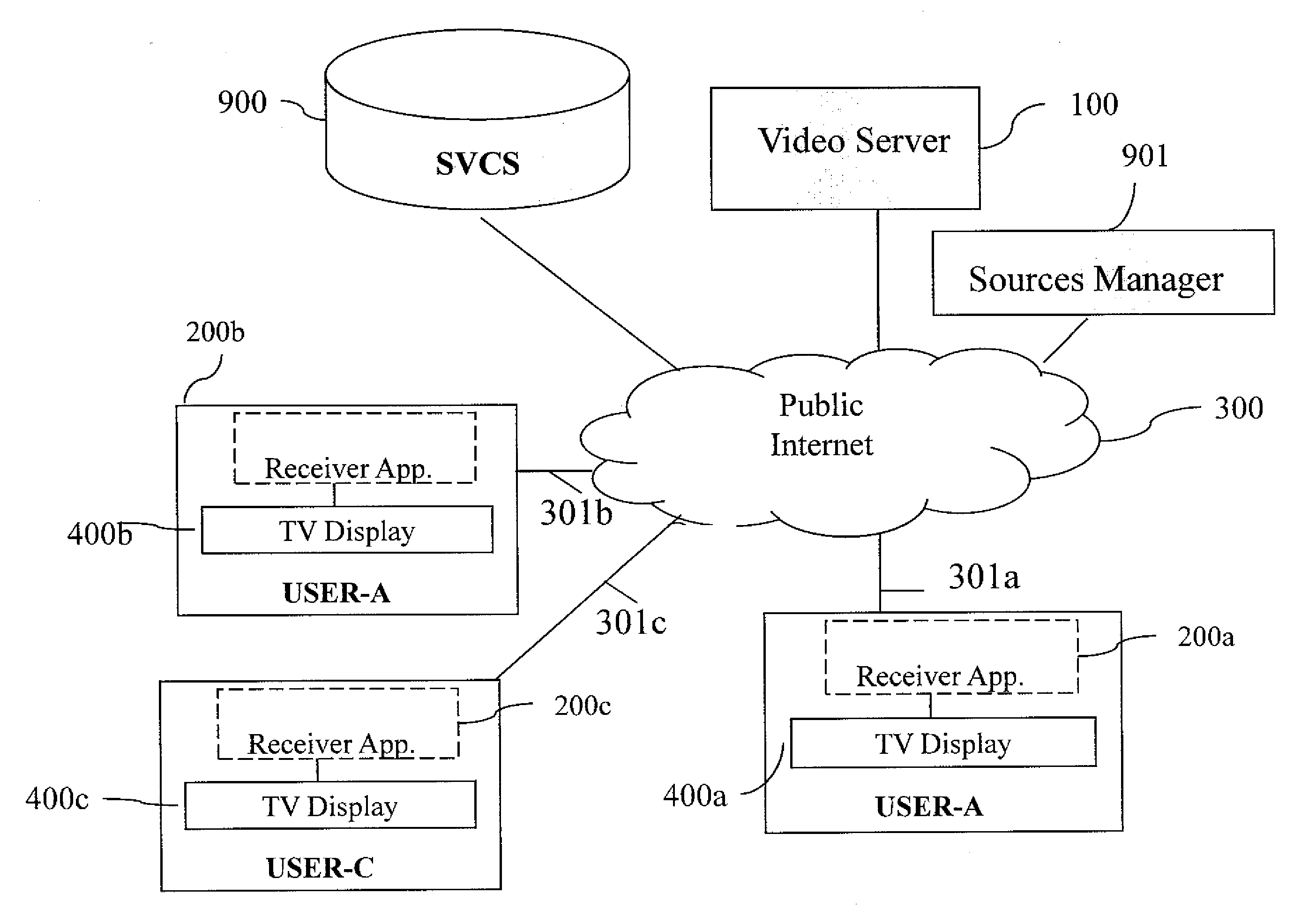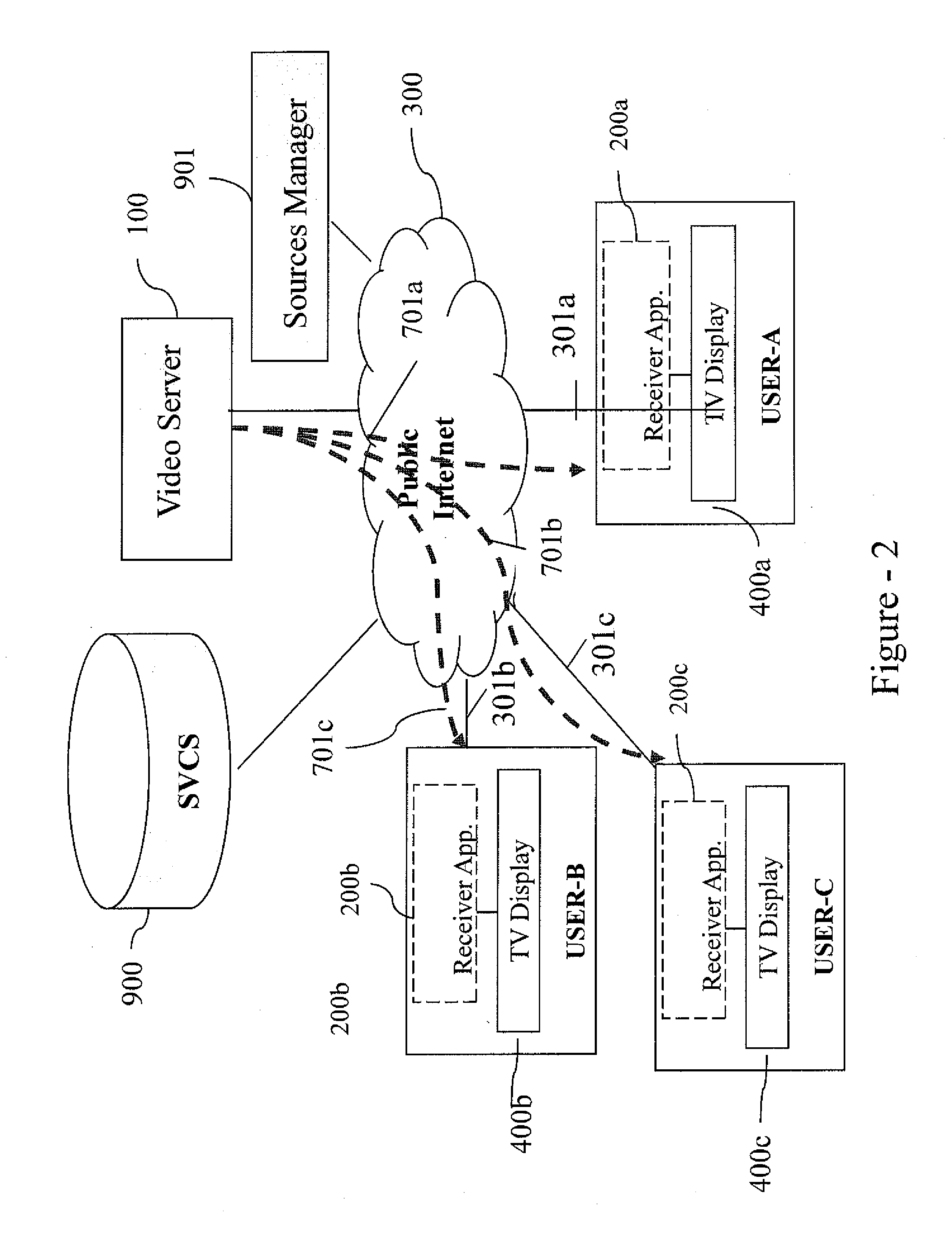System and method for interactive synchronized video watching
a video watching and interactive technology, applied in the field of compressed digital video delivery systems, can solve the problems of iptv and other packet network based video distribution systems suffering from both network delays and buffering delays, delay can be significant, and the type of overlay cannot control the delay to achieve the required synchronized watching, and achieves the effect of reducing frame rate, reducing signal to noise ratio, and reducing resolution
- Summary
- Abstract
- Description
- Claims
- Application Information
AI Technical Summary
Benefits of technology
Problems solved by technology
Method used
Image
Examples
Embodiment Construction
[0054]FIG. 1 illustrates an exemplary system for interactive synchronized video watching using a video server and an overlay conferencing system. The system comprises a video server 100, which contains one or more physical servers, located at the IPTV provider's network, the receiver application 200a, 200b or 200c at each TV user's location, alternatively known as the user or client, and public Internet 300, interconnecting video server 100 to receiving application 200a, 200b or 200c. While the network illustrated in FIG. 1 is the Public Internet 300, the present invention also envisions that the video server 100 and receiving application 200a, 200b or 200c can communicate over another network, for example, another IP network, a packet network, a combination of a private IP network and public Internet, or a private network, depending on the service provider's network architecture choice.
[0055]In an exemplary embodiment for interactive synchronized video watching, the system has one ...
PUM
 Login to View More
Login to View More Abstract
Description
Claims
Application Information
 Login to View More
Login to View More - R&D
- Intellectual Property
- Life Sciences
- Materials
- Tech Scout
- Unparalleled Data Quality
- Higher Quality Content
- 60% Fewer Hallucinations
Browse by: Latest US Patents, China's latest patents, Technical Efficacy Thesaurus, Application Domain, Technology Topic, Popular Technical Reports.
© 2025 PatSnap. All rights reserved.Legal|Privacy policy|Modern Slavery Act Transparency Statement|Sitemap|About US| Contact US: help@patsnap.com



